Focus on: Cornus (dogwood)
Fire up your landscape with flaming winter dogwoods.
Why dogwoods?
The Latin, botanical name of dogwoods, Cornus, means horn – and for good reason. Not only are dogwoods fully hardy to frost hardy, able to withstand the fiercest of UK frosts, but their wood has great shock resistance and has traditionally been used for such items as golf heads, mallets and archers’ bows.
Dogwoods are so synonymous with winter hardiness that they give their name to unseasonably cold snaps in spring – ‘dogwood winters’ are the chillier equivalent of ‘Indian summers’ mid-autumn. A dogwood winter usually occurs in April or May, around the time that many dogwood plants bloom, and can bring renewed frosts that are damaging to plants. Farmers used to delay planting until after the dogwoods had bloomed.
But the greatest asset of many Cornus varieties is the fiery winter colouring of their stems, making them a wonderful architectural plant to brighten landscapes in the bleaker months
Dogwoods: in brief
✓ Deciduous trees and shrubs
✓ Frost hardy
✓ Height range from 1m to 8m depending on the variety
✓ Plant year round
✓ Grows in all well-drained soil types
✓ Prune hard (coppice) in spring
✓ Low maintenance
✓ Generally pest and disease free
✓ Year-round colour
✓ Prefers full sun
✓ Prefers well-drained soil
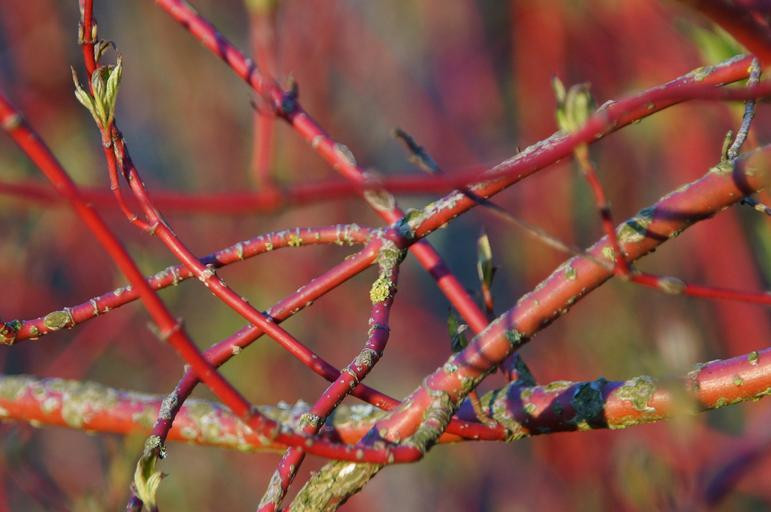
Cornus stems often have magnificent winter colour, varying from warm reds and oranges to fresh yellows and greens.
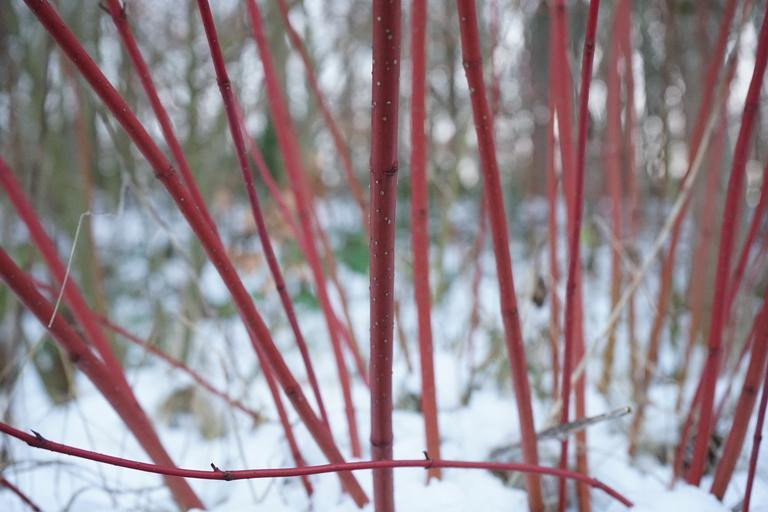
Dogwoods are hardy enough to withstand the toughest British winters.
How to grow Cornus
For the most vibrant colours, dogwoods are best planted in full sun, but they will tolerate partial shade. They can be planted all year round, although for the swiftest and strongest growth, autumn is the optimal time, although they will establish roots well for the summer when planted up until March. If they are planted in summer, they will need more watering until the following season, when their roots have a chance to take hold more strongly.
Although Cornus does not like to have ‘wet feet’ for a prolonged period of time, neither do they thrive in very dry soils. Surrounding your plants with a layer of wood chippings can help to maintain a good level of moisture, with the added benefit of repressing weeds, too. Once well established, dogwoods only require watering in long, dry spells.
To maintain bright stems, Cornus should be pruned annually. Cut your dogwoods well back in spring. Depending on the variety, you may also wish to prune them to control their size, since some varieties can reach 8m in height. This kind of hard pruning is known as coppicing. However, your Cornus plants should have been established for at least two years before being subjected to coppicing. All shoots can be cut back to 5-8cm above the ground. April is a good month to do this, so that you can maximise the enjoyment of the winter stems whilst ensuring a good crop for the following year. If the dogwoods have not grown a great deal, it is wise to take a lighter touch with the shears.
Over time, dogwoods can become tired and send up less shoots. You can take hardwood cuttings to propagate new plants, or simply buy replacements to keep your landscape aglow in the cold seasons.
Where do dogwoods work best?
Cornus is a versatile plant with lots of applications in a landscape. For a winter display with maximal impact, you will want to plant them close together, roughly 50cm apart. This will give you a dense blaze of colour.
For frontages, it is best not to place red- or orange-stemmed varieties of dogwood in front of brick walls as the colour of the bricks can diminish the impact of the plant. Instead, plant them in front of evergreen climbers and shrubs for optimal effect.
In borders, taller varieties of dogwood might be planted at the back to create height and interest. However, it takes some time for Cornus to reach maturity and the stems lose their colour as they age.
Cornus sanguinea is native to the UK, making it a good choice for a wildflower area intended to attract wildlife. If you choose to use dogwoods in this way, the hard spring pruning will need to be omitted, so that the flowers and berries can feed native wildlife species.
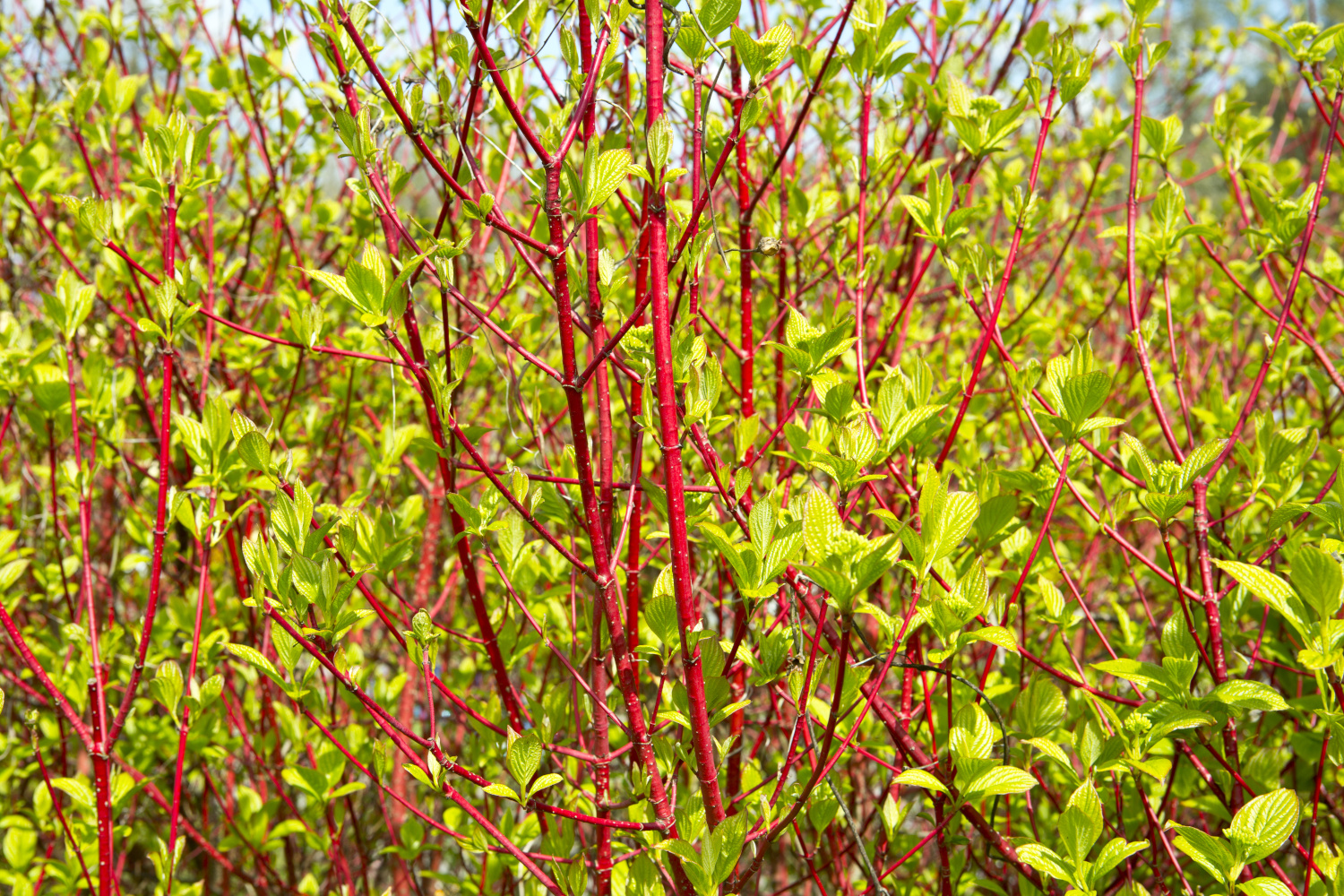
Fresh spring foliage creates a stunning contrast with this dogwood’s scarlet winter stems.
Which dogwoods are best for winter colour?
There are hundreds of fabulous Cornus varieties, but a few that really shine in winter landscapes include Cornus alba ‘Sibirica’, Cornus sanguinea ‘Anny’s Winter Orange’, Cornus sericea ‘Flaviramea’, Cornus alba ‘Spaethii’ and Cornus alba ‘Elegantissima’. Mix and match varieties for a splendid firework display erupting with golds, reds, oranges and yellows.
Cornus alba ‘Sibirica’ has slender crimson stems that can reach a height of up to 2.5m; Cornus sanguinea ‘Anny’s Winter Orange’ reaches a similar size but has a wonderful fiery coral colour in winter, and orange or pink foliage in autumn. For a springlike greenish-yellow, opt for Cornus sericea ‘Flaviramea’. Cornus alba ‘Spaethii’ and Cornus alba ‘Elegantissima’ are both larger varieties (each tops out at 4m), with red stems and attractive foliage – yellow-edged for ‘Spaethii’, white-rimmed for ‘Elegantissima’.
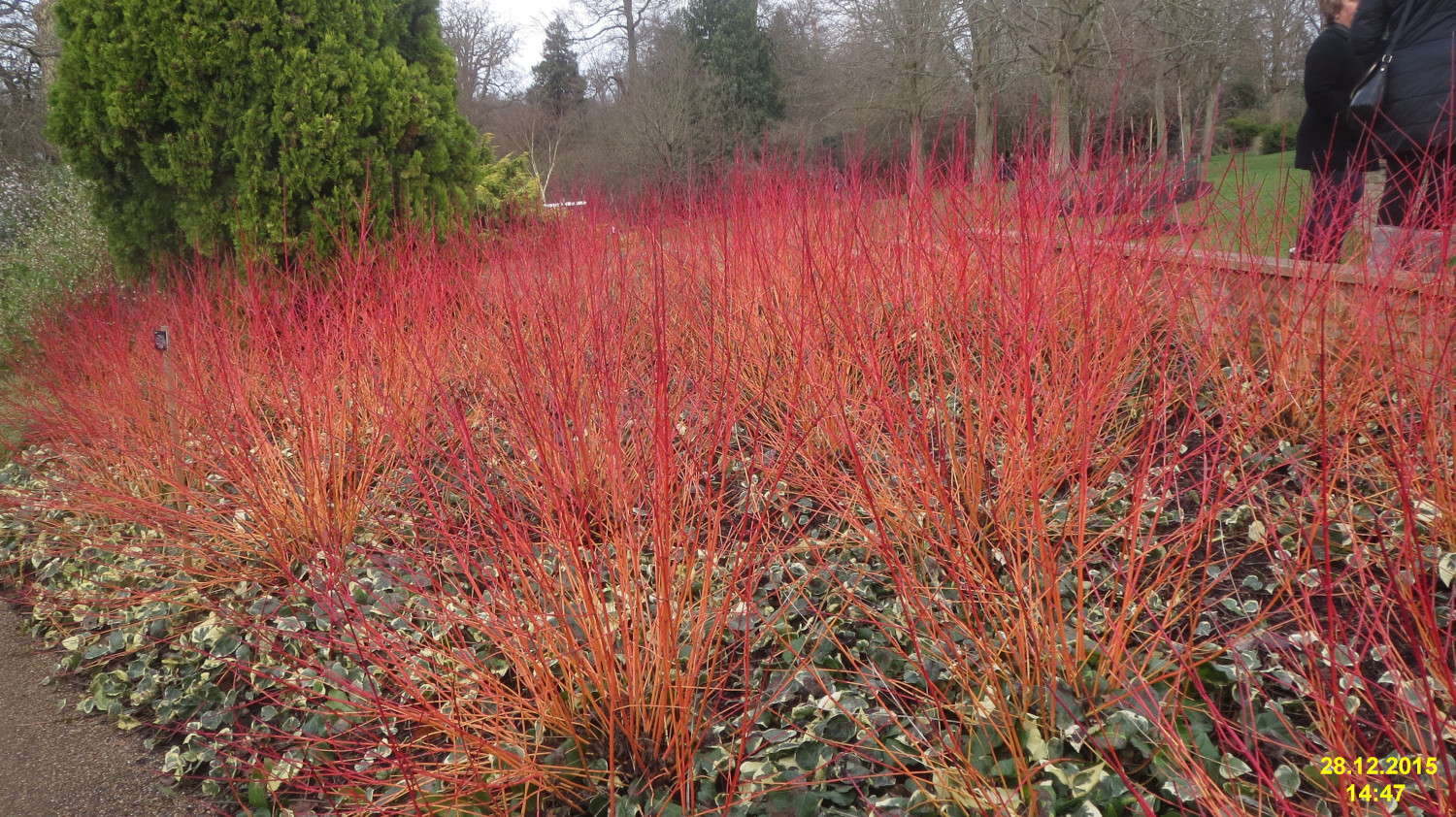
Cornus sanguinea ‘Anny’s Winter Orange flames into life.
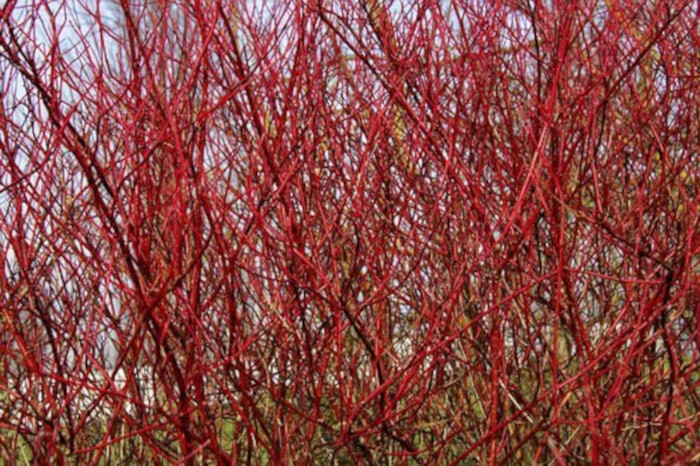
The slender scarlet stems of Cornus alba ‘Sibirica’.
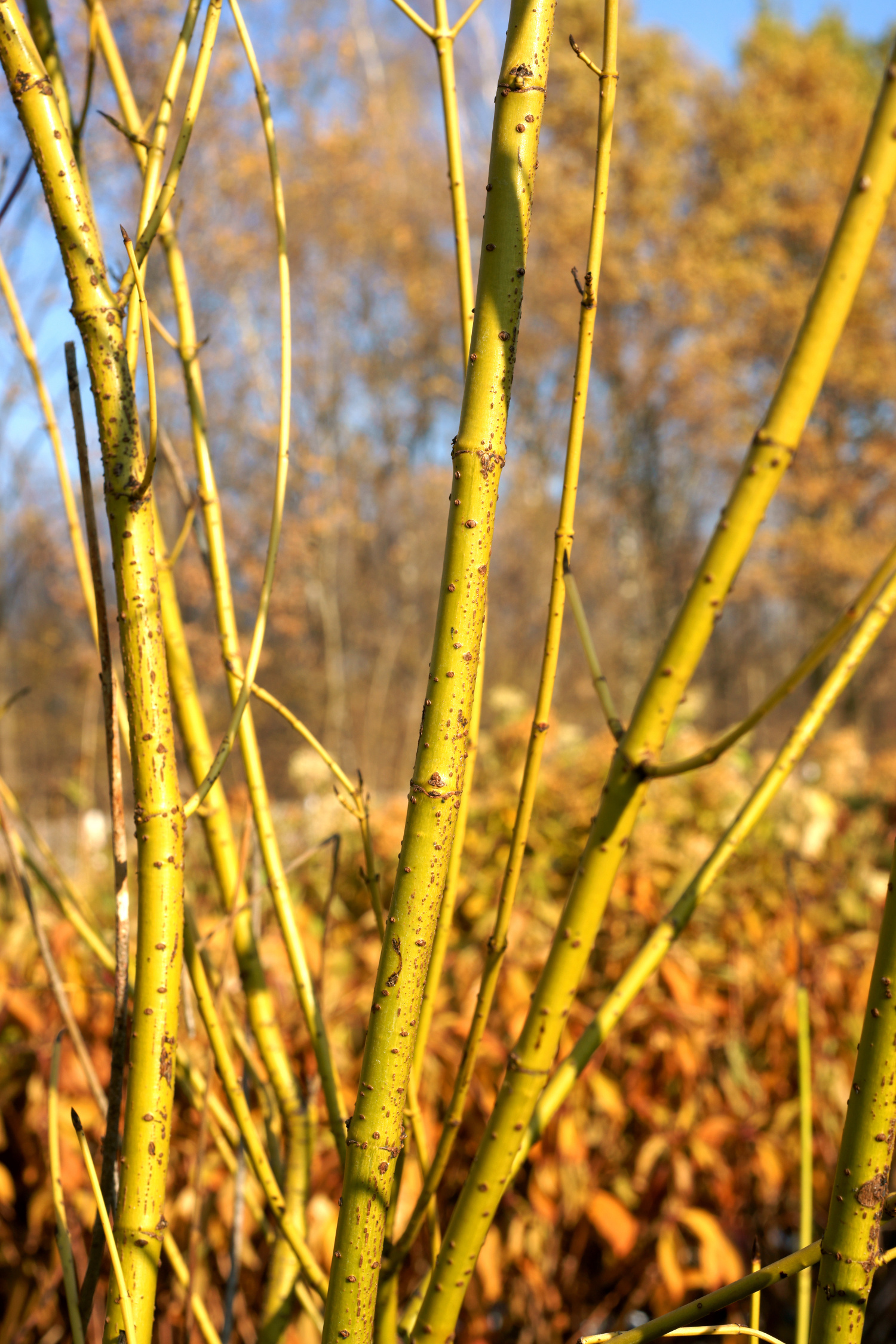
For a glorious yellow hue, Cornus sericea ‘Flaviramea’ is the natural choice.
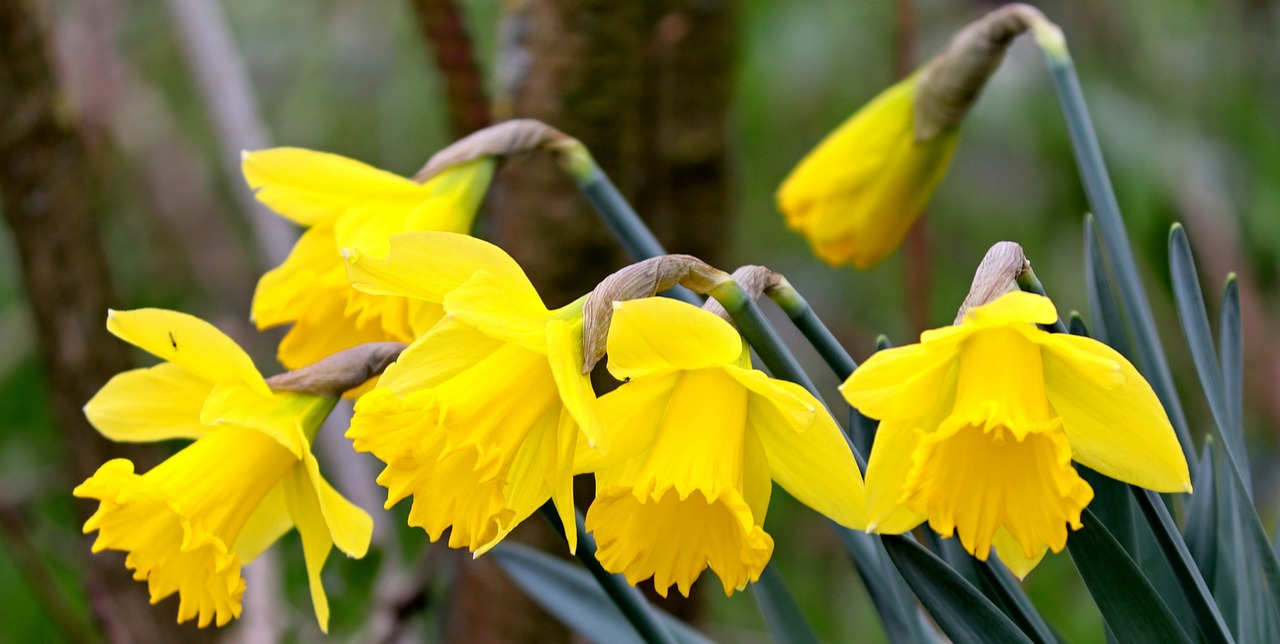
Early-flowering daffodils could be used to underplant dogwoods.
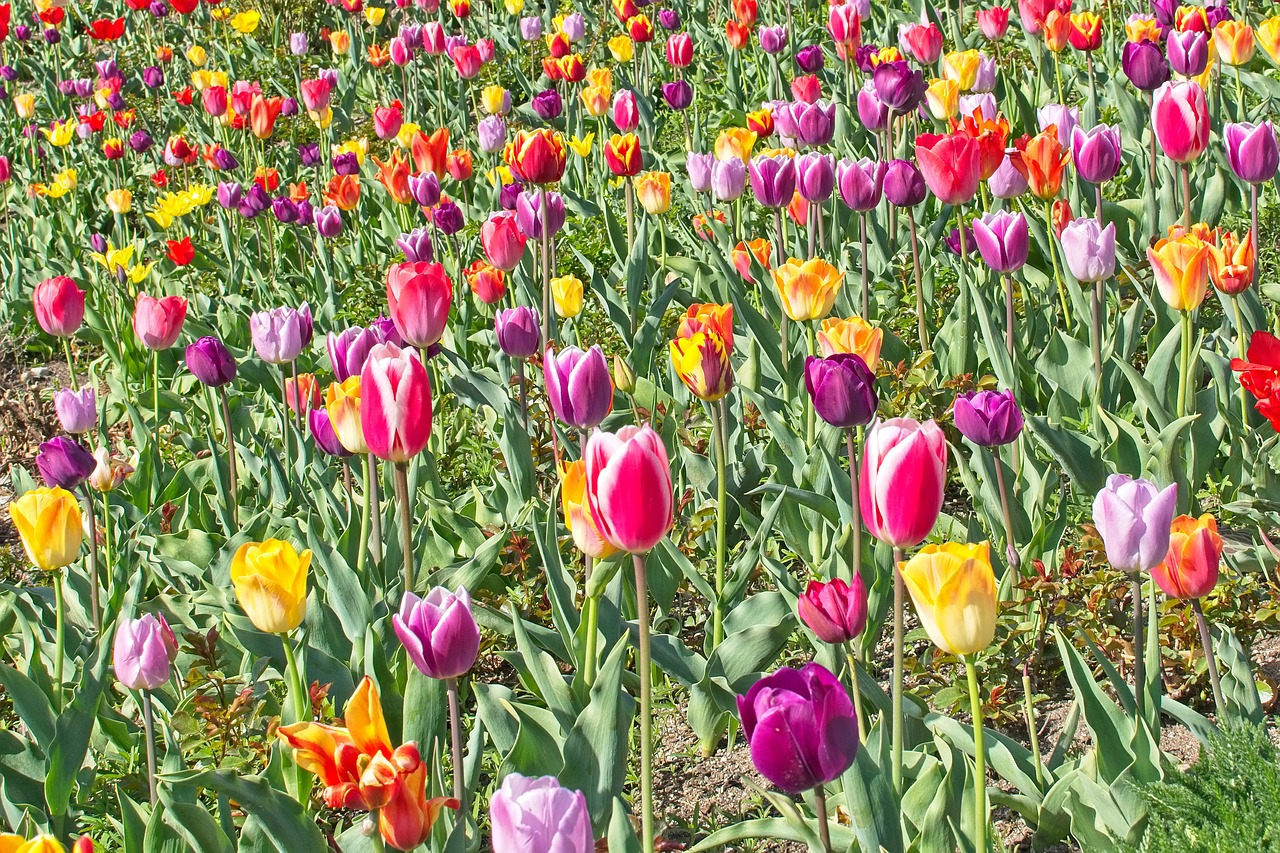
Tulips offer a range of colours to complement dogwood stems.
Which plants work well with dogwoods?
One of the simplest and most effective options is to underplant the taller Cornus plants with early flowering bulbs, creating a textured landscape of delicate spring blooms against a blazing backdrop of dogwood stems.
There are also other hardy shrubs which boast wonderfully coloured foliage which they retain in winter. Whilst not all are as frost-resistant as dogwoods, requiring protection during particularly cold snaps, they too can give your environments architectural interest and colour when flowers are few.
Among the best of these are Phormiums, of which there are hundreds of fantastic varieties with a range of colours to complement or contrast with dogwood stems – Phormium ‘Bronze Baby’ or Phormium ‘Platts Black’, for example, would work equally well with both red or yellowish hues. For other suggestions, check out our southern nursery manager’s top 5 varieties or watch his Tom’s Tips video about these versatile shrubs.
Right now it’s the perfect time to warm up your winter with a display of colourful Cornus. Contact an expert from the G-Team if you need advice on varieties – they’ll be happy to help!

